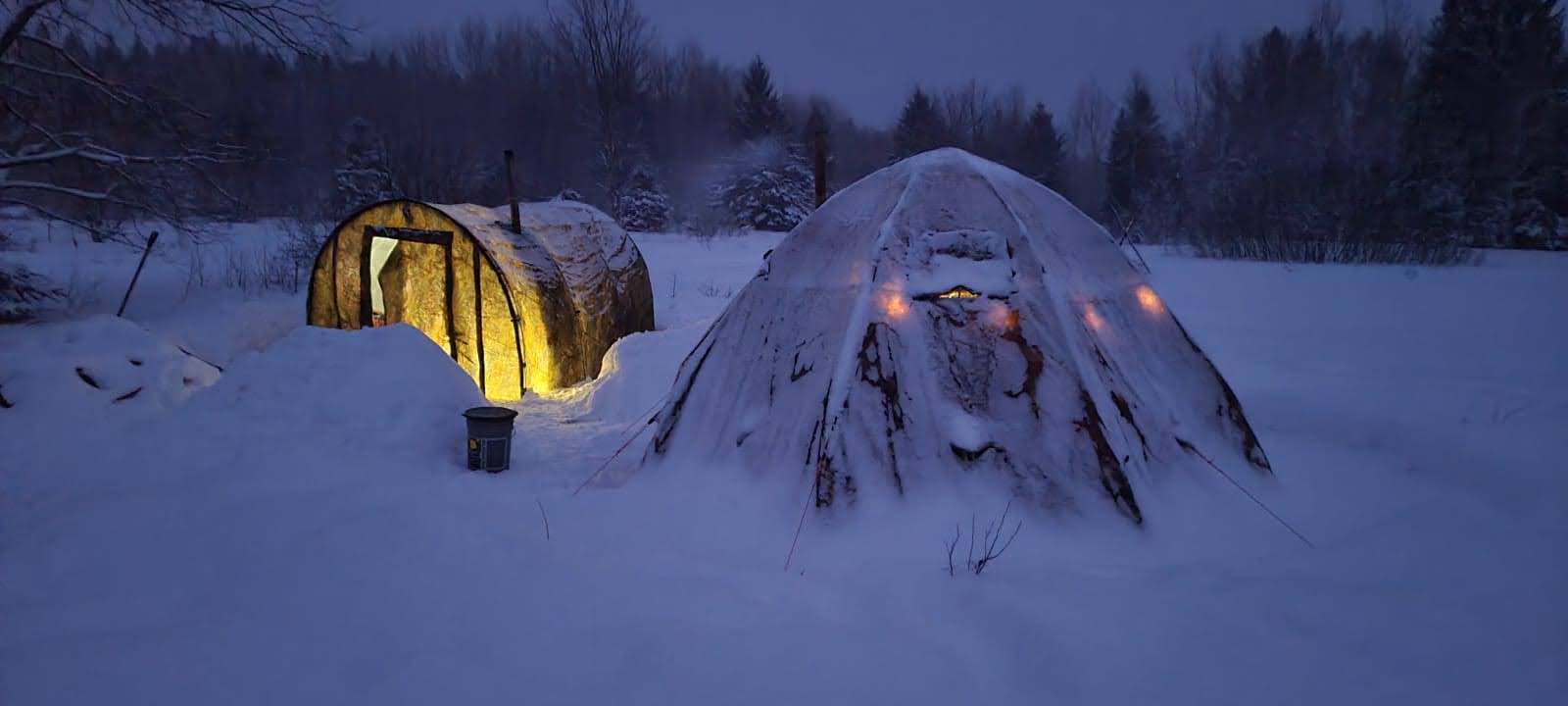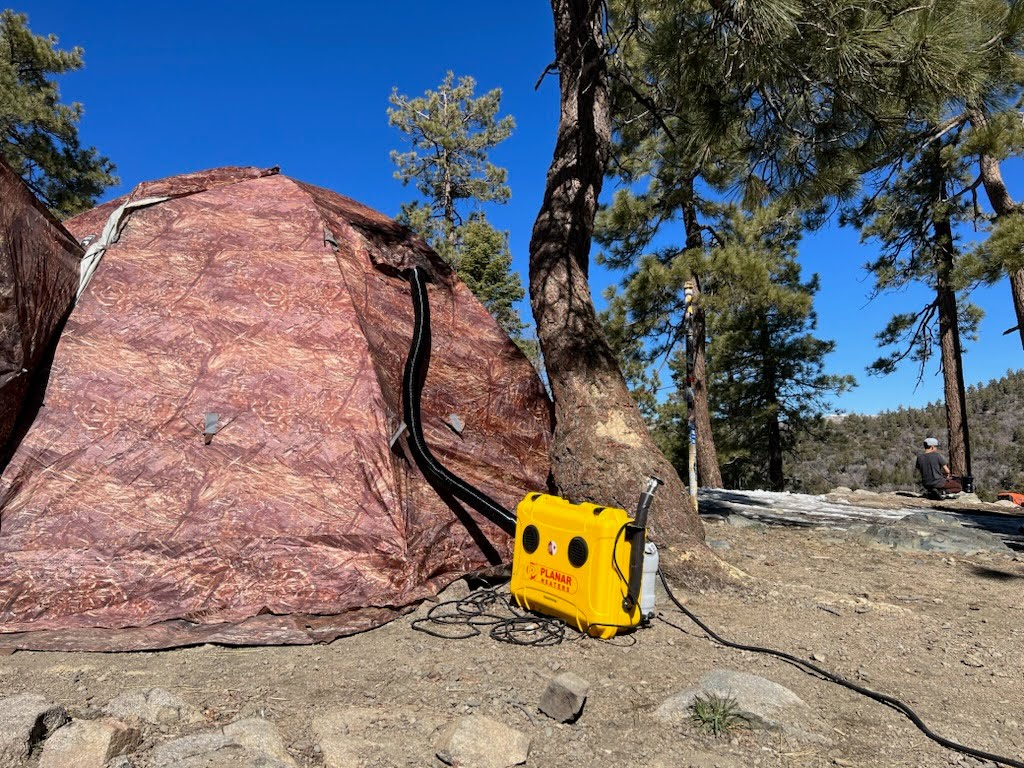When you’re shopping for camping gear, it’s easy to get swept up by the promises printed on product tags. “Waterproof.” “Heavy-duty.” And of course, one of the most common: “4 season tent.” But what does that label really mean? And more importantly, can you trust it?
The truth is, not all tents that claim to be 4-season are actually built for year-round use. Many fall short in cold weather, strong wind, or snow. That can turn a fun camping trip into a freezing nightmare.
In this article, we’ll break down exactly what qualifies a tent as a true 4 season tent. We’ll also take a closer look at the Bereg UP-5, a tent that doesn’t just wear the 4 season label—it earns it. If you want to camp comfortably and safely year-round, this guide is for you.
Table of Contents
- What Is a 4 Season Tent Supposed to Do?
- Why Most Tents Labeled “4 Season” Fall Short
- Key Features of a True 4 Season Tent
- The Bereg UP-5: A Case Study in 4 Season Performance
- Optional Add-ons That Make a Difference
- Safety and Stove-Readiness: A Critical Component
- Real-World Use Cases for 4 Season Tents
- Final Thoughts: Don’t Settle for a Label—Look for Proof
- FAQ
What Is a 4 Season Tent Supposed to Do?

A 4 season tent should protect you in all four seasons—including the harshest weather conditions. That means snowstorms, sub-freezing temperatures, heavy rain, and strong winds. It should provide insulation, structural stability, and keep you dry and safe.
These tents aren’t just for cold weather. A good 4 season tent also needs to adapt to warmer conditions. Proper airflow, removable components, and adjustable features matter. You want something you can use in both a snow-covered forest and a rainy spring field.
At its core, a true 4 season tent isn’t about extra fabric or thicker poles. It’s about thoughtful design. It needs to perform when the weather turns against you.
Why Most Tents Labeled “4 Season” Fall Short

Many tents are labeled 4-season because they have thicker material or stronger poles than their 3-season counterparts. But that alone doesn’t cut it. A thicker rainfly won’t help if your tent collapses under a foot of snow.
One of the biggest issues is poor structural support. A true 4 season tent needs to handle snow load and resist wind. Dome-style tents with reinforced frames are ideal. Unfortunately, many store-bought “4-season” models don’t offer this.
Another common failure point is condensation. Without a double-wall design and proper ventilation, these tents get wet inside. That’s a serious issue in cold weather where dampness can lead to hypothermia.
Always dig deeper than the label. Look at the specs. Check for real-world reviews. And don’t assume a 4-season claim is automatically trustworthy.
Key Features of a True 4 Season Tent

To qualify as a true 4 season tent, a shelter should have several critical features. First is the frame. You need something strong enough to handle wind and snow. The best use aircraft-grade aluminum with multi-point reinforcement.
Next is fabric. Look for high-denier, water-repellent materials. The outer shell should block wind and water. The inner layer should help trap heat. Together, they create a barrier that keeps the inside warm and dry.
Double walls are essential. The air gap between the inner and outer walls helps regulate temperature and reduce condensation. It’s one of the most overlooked but important features.
Other signs of a solid 4 season tent include: full-coverage rainfly, storm flaps, a strong skirt for snow anchoring, and a floor that insulates from below. Reflective guy lines and multiple guy-out points also increase stability.
The Bereg UP-5: A Case Study in 4 Season Performance

The Bereg UP-5 is a 4 season tent that truly lives up to its name. It’s designed for extreme use in hunting, fishing, and off-grid winter adventures. And it performs well year-round.
Its dome-umbrella frame is made from B95T1 aviation-grade aluminum. With eight support points, it’s incredibly stable—even in high winds or open steppe conditions. Setup takes about a minute, making it perfect for cold-weather emergencies.
This 4 season tent features a two-layer awning system: Oxford 300 PU 4000 (outer) and Oxford 210 PU 2000 (inner). The inner layer creates insulation and cuts condensation. Velcro attachments allow you to remove the inner layer for warm-weather use.
The Bereg UP-5 also offers serious livability. With 13.1 square meters of space and a 2.2-meter peak height, you can stand up fully and move around. Two doors, windows with TPU film, and ventilation flaps all help control airflow year-round.
Optional Add-ons That Make a Difference

True 4 season tents often come with add-ons that improve performance. The Bereg UP-5 offers several.
Start with the insulated floor. It features a three-layer design with foil-clad isolon and Oxford fabric. This “sandwich” helps trap heat and block moisture from seeping in.
Another smart option is the arctic cape. If you’re camping in temps below -25°C, it adds another protective barrier around the tent.
The UP-5 also works with a vestibule connector. You can attach vestibules in different sizes (2×2, 3×2, or 4×2 meters) for gear storage, entry management, or extra sleeping space. These modular options increase flexibility and make the tent useful in almost any situation.
Safety and Stove-Readiness: A Critical Component

Many folks overlook the importance of stove compatibility. In freezing conditions, it can mean the difference between comfort and frostbite.
The Bereg UP-5 is designed to work with a long-burning stove. It features a chimney port with a stainless steel ring and heat-resistant wall fabric that withstands up to 1200°F. This makes it one of the safest 4 season tent options for stove use.
Safety doesn’t stop at the stove. The UP-5 includes proper ventilation for airflow, dual entrances for emergency exit, and reinforced materials that don’t burn or melt easily. All these details matter when you’re using heat inside a closed shelter.
Just remember: never use gas or liquid fuel appliances inside a tent. Stick with wood stoves, and always follow best practices for ventilation and safety.
Real-World Use Cases for 4 Season Tents

Not everyone needs a 4 season tent. But for certain adventures, it’s non-negotiable.
If you ice fish, hunt, or camp in remote areas during winter, a true 4 season tent is a must. The UP-5 excels in those environments. It’s also a popular choice for setting up mobile saunas or bathhouses, thanks to its size, ventilation, and stove compatibility.
Even in summer, the UP-5 adapts well. By removing the inner awning, you get better airflow. And by using the vestibule, you can expand your livable area without overheating the main space.
I’ve personally seen tents collapse under wet snow or rip from strong gusts in the mountains. Having a reliable 4 season tent like the Bereg UP-5 makes a world of difference. You don’t just survive the elements—you stay comfortable in them.
Final Thoughts: Don’t Settle for a Label—Look for Proof

The phrase “4 season tent” should mean more than just marketing. It should signal durability, insulation, stove-readiness, and performance in extreme conditions.
Before buying a tent labeled 4-season, ask yourself: Can it hold up to a snow load? Does it have ventilation to reduce condensation? Is it compatible with a wood stove? Can I actually use it year-round?
The Bereg UP-5 isn’t just a 4 season tent by name. It’s a true all-weather shelter that’s been tested in the wild. If you’re serious about camping in every season, invest in gear that’s just as serious.
FAQ

Can I use the Bereg UP-5 in summer?
Yes! You can remove the inner awning for better airflow, making it great for warm-weather camping.
Is the Bereg UP-5 safe to use with a wood stove?
Yes. It has a chimney port, a heat-resistant wall, and ventilation to safely support a long-burning wood stove.
How many people fit in the Bereg UP-5?
It can comfortably fit 4-6 people, depending on gear and how much space you need.
Does the UP-5 really set up in under a minute?
Yes. Once you’re familiar with the process, the dome-umbrella frame pops into place very quickly.
What’s the biggest advantage of a true 4 season tent?
Reliability. You can camp comfortably year-round without worrying if your shelter will fail when conditions get tough.
A quick heads-up: If you snag something through our affiliate links or check out our sponsored content, we might earn a commission at no extra cost to you. But fear not, we’re all about recommending stuff we’re truly stoked about!




